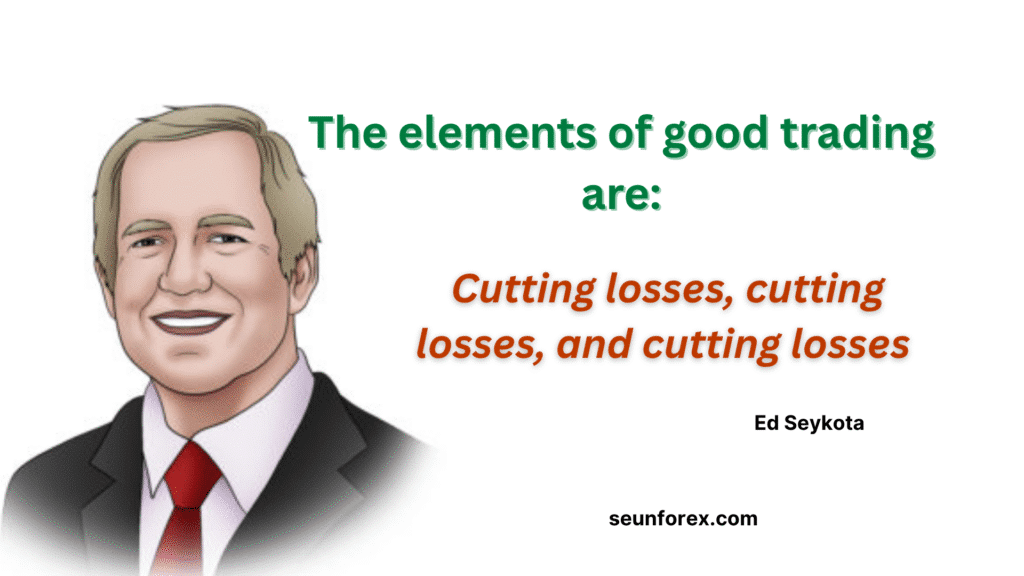
A global trader’s breakdown of the real account killer — and how to master it before it masters you
If you want to truly understand prop firm drawdown, you’ve found the right guide. Let’s cut through the confusion.
You’ve passed the rule test. You now know how to read prop firm rules.
Now for the real account killer: Drawdown.
Get this wrong, and nothing else matters. Not your strategy, not your analysis, not your winning trade ideas.
That sinking feeling when you watch your equity tick down, closer and closer to that red line… it’s a special kind of torture. You start second-guessing every decision. You close winning trades early. You let losing trades run, praying for a miracle that never comes.
This isn’t trading. This is financial panic.
Most traders think of prop firm drawdown as just a number, a percentage on a page. They’re wrong.
Drawdown is a psychological war.
And right now, if you’re confused about static vs. trailing, you’re already on the back foot. This guide will arm you for that war. We’re going to strip away the complexity and give you a soldier’s understanding of your battlefield. By the end, you won’t just understand prop firm drawdown—you’ll wield it as your most powerful weapon for risk management.
The Mind Game: Why Drawdown Breaks Smart Traders

Before we dive into the definitions, let’s talk about the fear in your gut.
It’s there for a reason. According to Investopedia, a drawdown represents the decline from a peak in equity to its lowest point before recovery—the visible measure of loss in a trader’s account.
But in the world of prop firms, that sterile definition doesn’t capture the whole picture. Understanding the psychology behind prop firm drawdown is what separates those who pass from those who fail.
That number is far more than math; it’s the line between being a funded trader and being a failed challenge. It’s the embodiment of loss—the quantified limit of your failure. Your brain isn’t wrong to fear it; it’s just unprepared for this specific battle.
This fear triggers your limbic system—the fight-or-flight response. In trading, this looks like:
- Paralysis: You don’t take valid setups because you’re scared of losing.
- Revenge Trading: You break your rules to “get back” the lost money.
- Hope-Based Trading: You hold losing positions, hoping the market will turn.
The prop firms know this. The drawdown isn’t just a risk management tool for them; it’s the ultimate psychological filter. It separates the disciplined professionals from the emotional gamblers.
Understanding this is your first step to winning. You’re about to move from being a prisoner of the drawdown to being its master.
Deconstructing Drawdown: The Two Battlefields
Every prop firm’s drawdown rules fit into one of two camps. Your entire strategy must adapt to which battlefield you’re fighting on.
Pillar 1: Static Drawdown (Your Fixed Line in the Sand)
Static drawdown is your simplest, most rigid loss limit. It’s a fixed dollar amount or percentage calculated from your initial account balance. This line does not move, no matter how much profit you make.
Let’s Make It Concrete:
You start a $100,000 challenge with a 5% static drawdown.
- Your starting balance: $100,000
- Your max loss (drawdown): 5% of $100,000 = $5,000
- Your absolute floor, your “blow-up” level: $95,000
It doesn’t matter if your account grows to $110,000. Your blow-up level is still $95,000. The line is drawn in sand that never shifts.
The Psychological Trap: The Safety Illusion
Static drawdown feels safe at first. You have a clear, unchanging line. But the trap is in its rigidity. After a string of profits, that fixed line feels… small. It can make you overly cautious, causing you to leave money on the table because you’re terrified of giving back profits and hitting a limit that hasn’t changed.
What It Truly Tests:
Static drawdown is a test of your foundational risk management. Do you have the discipline to survive and compound profits without the “help” of a moving goalpost? It’s a pure test of your ability to not give back gains.
Pillar 2: Trailing Drawdown (The Moving Target)
Trailing drawdown is the most common—and most emotionally challenging—model. Your maximum loss is calculated from your peak equity. As your account grows, your “floor” rises. It’s a profit-protection mechanism.
Let’s Make It Concrete:
You start a $100,000 challenge with a 5% trailing drawdown.
- Starting Point: Equity = $100,000. Your max loss is $5,000. Your blow-up level is $95,000.
- You Make a Profit: Your equity peaks at $104,000.
- The Floor Moves: Your new blow-up level is now 5% below this peak: $104,000 – $5,200 = $98,800.
The line in the sand has now moved up by $3,800. Your profits are now being “locked in” as a new, higher safety net.
The Psychological Trap: Why Winning Feels Like Losing

This is where traders have a mental breakdown. You see your equity tick up to $104,000, then pull back to $102,000 on a small retracement. Even though you’re still up $2,000 overall, you watch in horror as the trailing threshold seems to “chase” your current equity.
It creates a perverse feeling where market pullbacks—a normal part of trading—feel like active losses. This preys on the scarcity mindset: “They’re taking my profits away!”
What It Truly Tests:
Trailing drawdown is a test of your ability to secure profits and manage open P&L. It forces you to bank wins and not be greedy. It’s designed to find traders who know how to transition paper profits into realized gains.
Pillar 3: Daily Loss Limit vs. Total Drawdown (Your Speed Limit vs. Your Final Destination)
Many traders confuse these two, and it’s a fatal error. Let’s end the confusion right now.
- Total Drawdown (Static or Trailing): This is your overall maximum loss. It’s the final destination. If you hit this, your account is finished. Game over.
- Daily Loss Limit: This is your daily speed limit. It’s the maximum you’re allowed to lose in a single trading day. You could hit your daily loss limit without being anywhere near your total drawdown.
The Concrete Example:
- Your Total Drawdown: $5,000
- Your Daily Loss Limit: $2,000 (a common rule)
You have a terrible day and lose $2,000. Your trading for the day is halted. Your account is not blown. You still have $3,000 of “room” within your total drawdown to trade with tomorrow.
The Psychological Trap:
Traders see a losing day and go on tilt, trying to battle back to breakeven and violating the daily limit. This turns a bad day into a terminated account.
Your Action Plan:
Know both numbers. The daily loss limit is your circuit breaker. It’s there to save you from yourself. Respect it absolutely.
Pillar 4: The Equity vs. Balance Debate (The Ghost That Blows Accounts)
This is the most advanced—and most dangerous—distinction. Does the firm calculate your drawdown based on your Balance or your Equity?
- Balance: Your starting cash for the day, plus any realized (closed) profits/losses. It ignores your open trades.
- Equity: Your Balance plus the unrealized profit or loss from your currently open positions. It’s your real-time net worth.
Why This Is a Killer:
Let’s say your drawdown is based on Balance.
- Your Balance: $100,000
- You open a trade that goes -$1,000 against you.
- Your Equity is now $99,000, but your Balance is still $100,000.
- Since drawdown is based on Balance, you are still $5,000 away from your blow-up level.
Now, let’s say your drawdown is based on Equity.
- In the same scenario, your Equity is $99,000.
- You are now only $4,000 away from your blow-up level.
Equity-based drawdown is far more punishing. A string of losing open positions can push you dangerously close to your limit without a single trade ever closing.
Your Action Plan:
This is non-negotiable. You MUST find this in the rulebook. Search for “drawdown based on” or “calculation method.” When in doubt, assume it’s the stricter Equity-based calculation.
Your 3-Minute Drawdown Pre-Flight Check
Before you open your trading platform each day, run this checklist:
- [ ] Drawdown Type Identified: [ ] Static [ ] Trailing. My current blow-up level is: $_________
- [ ] Daily Loss Limit Known: My daily loss limit is $_________. If I hit this, I STOP TRADING.
- [ ] Equity vs. Balance Confirmed: Drawdown is calculated on [ ] Equity [ ] Balance.
- [ ] Peak Equity Tracked: (For Trailing) My current peak equity is $_________. I will not panic during normal pullbacks from this peak.
Conclusion: From Drawdown Fear to Drawdown Mastery
The confusion you felt about static vs. trailing drawdown? That was the old you. The you who saw rules as threats.
The new you is a strategist. You now see that:
- Static Drawdown is your test of pure discipline.
- Trailing Drawdown is your test of profit-taking maturity.
- The Daily Loss Limit is your protective circuit breaker.
- The Equity/Balance distinction is the fine print that separates amateurs from pros.
This knowledge is your unshakeable foundation. While other traders are ruled by the fear of a red line, you are empowered by the understanding of it.
You are no longer fighting the market. You are managing your risks. And in that subtle shift, everything changes.
The rules are clear. The path is yours to take.
Still feeling unsure about how all the rules fit together? Go back to the foundation and master how to read prop firm rules from the beginning.